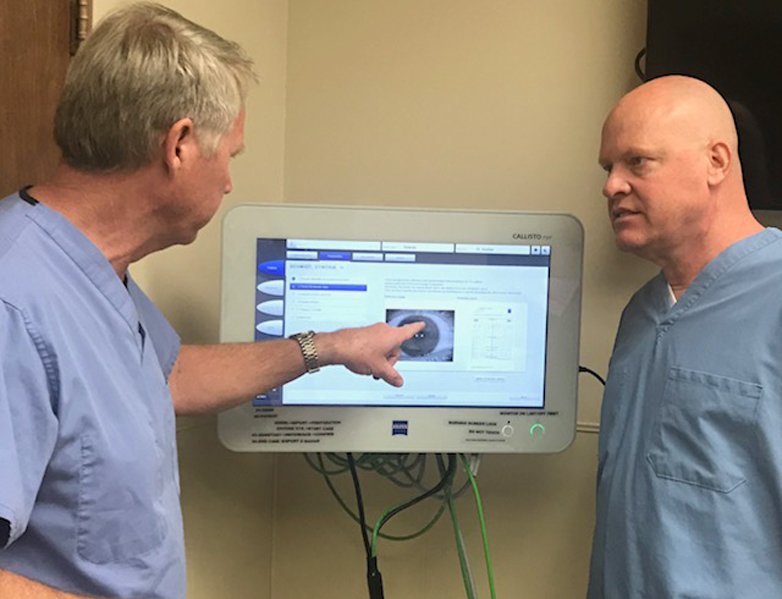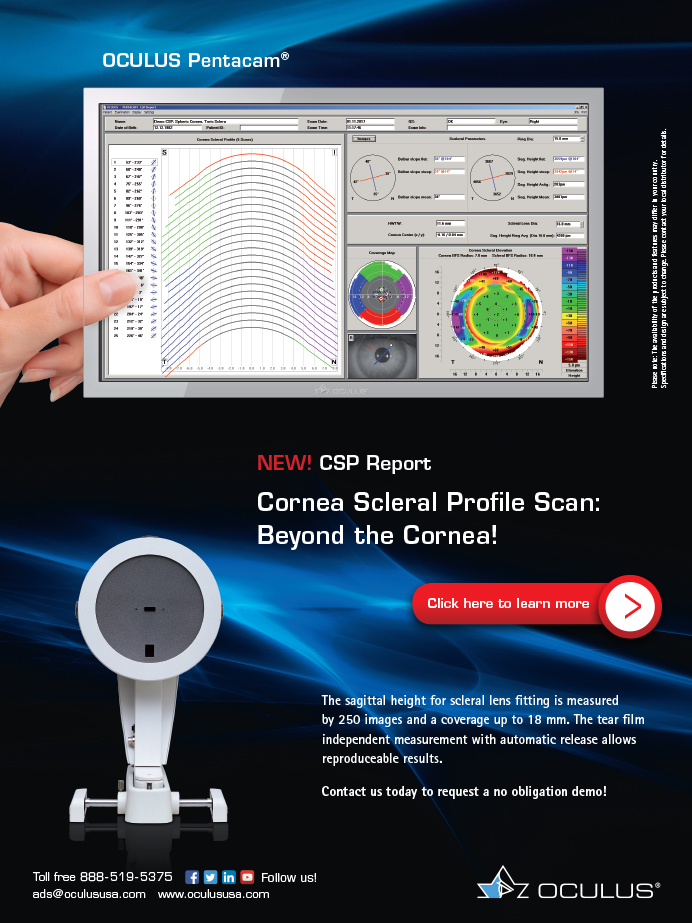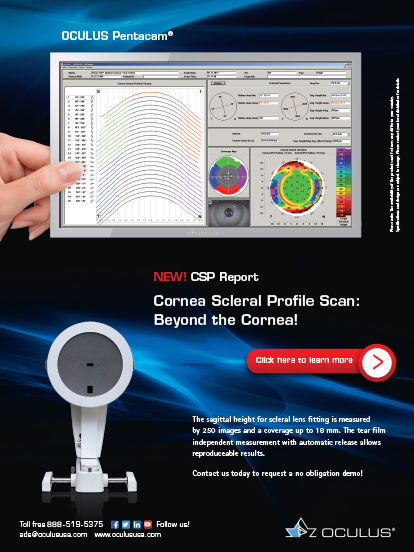My practice has been working closely with the optometrists in our community for many years. We have developed strong relationships with them and established a level of comfort that makes shared patient care a smooth process. When we receive a consult for refractive cataract surgery evaluation (and we consider all of our cataract surgery to be refractive in some way), it represents the culmination of a long process of discussion, education, and time that has occurred over may years. Having seen a number of perfect referrals in my practice, I know a good referral when I see one (Figure 1).

Figure 1. Mark Kontos, MD (left), and referring optometrist Rob Sorrenson, OD, review a patient’s surgical plan.
ANATOMY OF A PERFECT REFERRAL
But what exactly does a perfect referral look like? There are a number of factors to consider.
Education
I consider an educated patient a good first step. Patients need to know that achieving independence from glasses is possible for many people at the time of cataract surgery. Optometrists referring to our practice know that we focus on advanced technology IOLs and laser cataract surgery. Our referring optometrists agree that the best place for patients to first hear about these options is in the OD’s practice. Optometrists who concisely and accurately explain current surgical options for refractive cataract surgery do their patients a great service. Discussing with the patient the advantages of femtosecond lasers in surgery is also an important aspect of the referral.
ODs looking to create a great referral should also discuss the logistics of surgery with patients. Some good items to mention include surgery scheduling, the importance and use of drops, and the postoperative follow-up schedule.
Candidacy
ODs who can accurately gauge a patient’s interest in refractive cataract surgery can save time for the optometrist, the surgeon, and the patient. Identification of disqualifying conditions such as epiretinal membrane or early age-related macular degeneration is important: Such identification allows these other conditions to be treated and avoids disappointing outcomes. Fewer things are more disappointing than seeing patients excited because they thought spectacle independence was on the horizon, only to leave the office disappointed because they are not candidates for advanced technology IOL surgery.
Costs and Expectations
I prefer to have referring physicians discuss costs in general terms only. I don’t like them to use specific dollar amounts, even though they are aware of our charges, because conversations about costs may confuse patients early in the discussion.
Laying the groundwork for realistic patient expectations in the optometrist’s office is another aspect of a perfect referral. It is important to me that the message the patient receives about possible surgical outcomes should be realistic. Discussing possible side effects such as nighttime halos or the need for glasses in some situations introduces expectations that my office staff will later reinforce.
Patients With Previous Surgery
Many of the patients referred to my office by ODs have had previous refractive surgery such as radial keratotomy or laser refractive surgery. These patients are usually highly motivated to return to the glasses-free life they enjoyed before onset of cataracts. Surgical planning is more complex for this group, and we make sure they know that their cases will require extra planning.
A CAREFULLY COORDINATED EFFORT
We have taken great care in discussing all of the issues listed above with our referring doctors during educational events, surgical visits, and personal communications so that they can accurately discuss them with our shared patients. Such communication means that patients arrive in our office with some sense of the issues at work in their surgery. This affords us the chance to have more detailed discussions than we might otherwise have had.
Referring a patient to another physician for shared surgical care is the ultimate act of trust between two doctors. All parties—the referring doctor, the comanaging doctor, and the patient—have expectations in referral cases. Communication and trust are essential to success.
Good referrals don’t happen by accident. They require efforts by both the referring doctor and the surgeon—efforts that can result in a mutually respectful relationship that ultimately benefits our patients.






